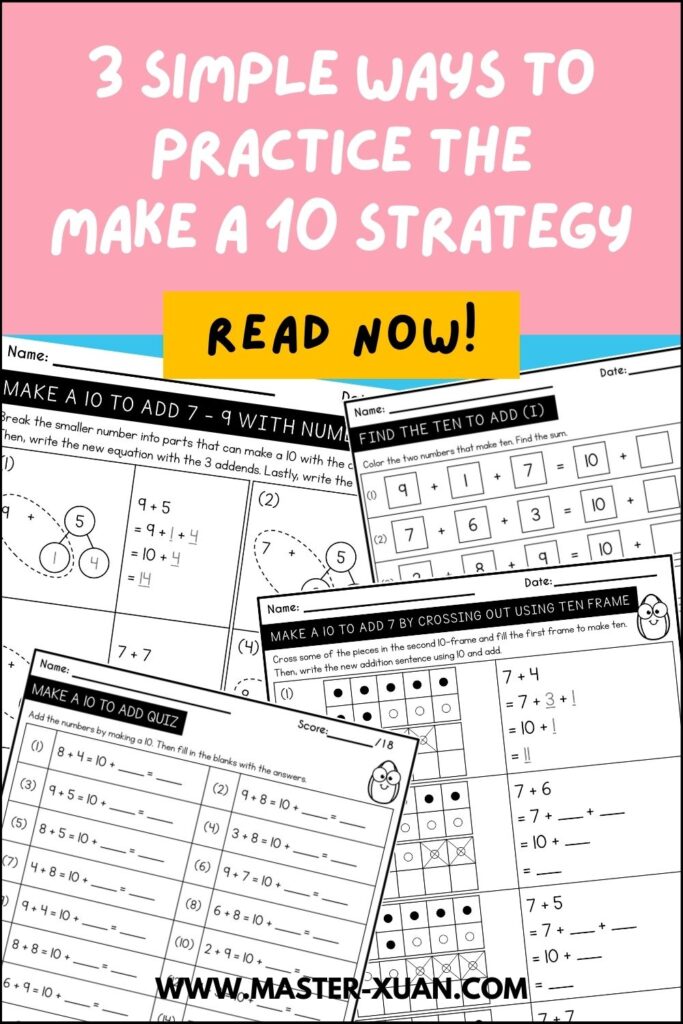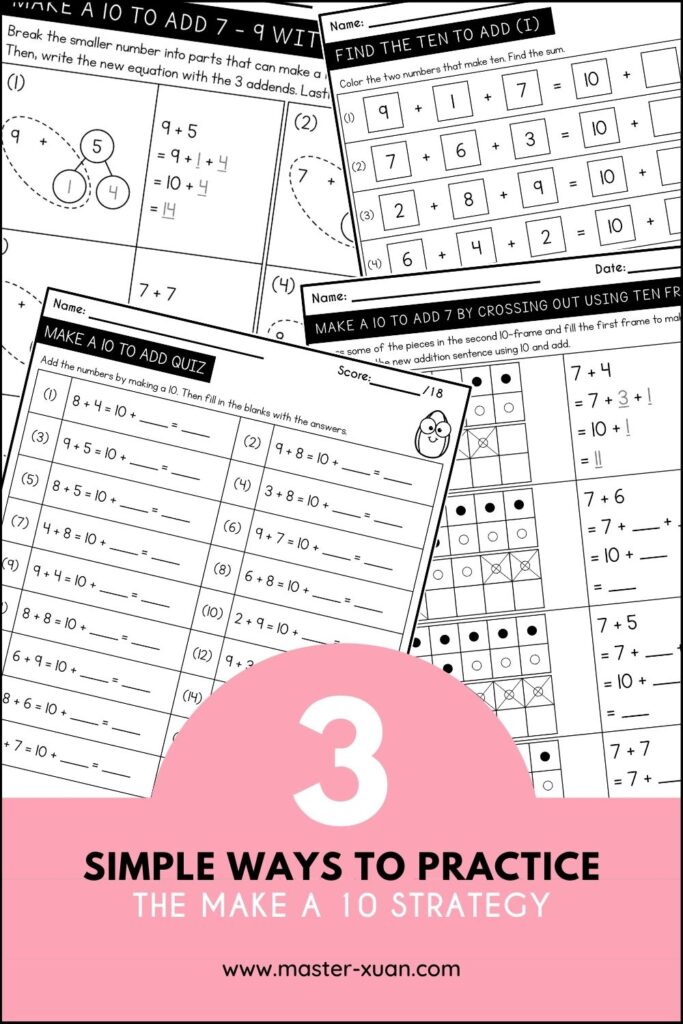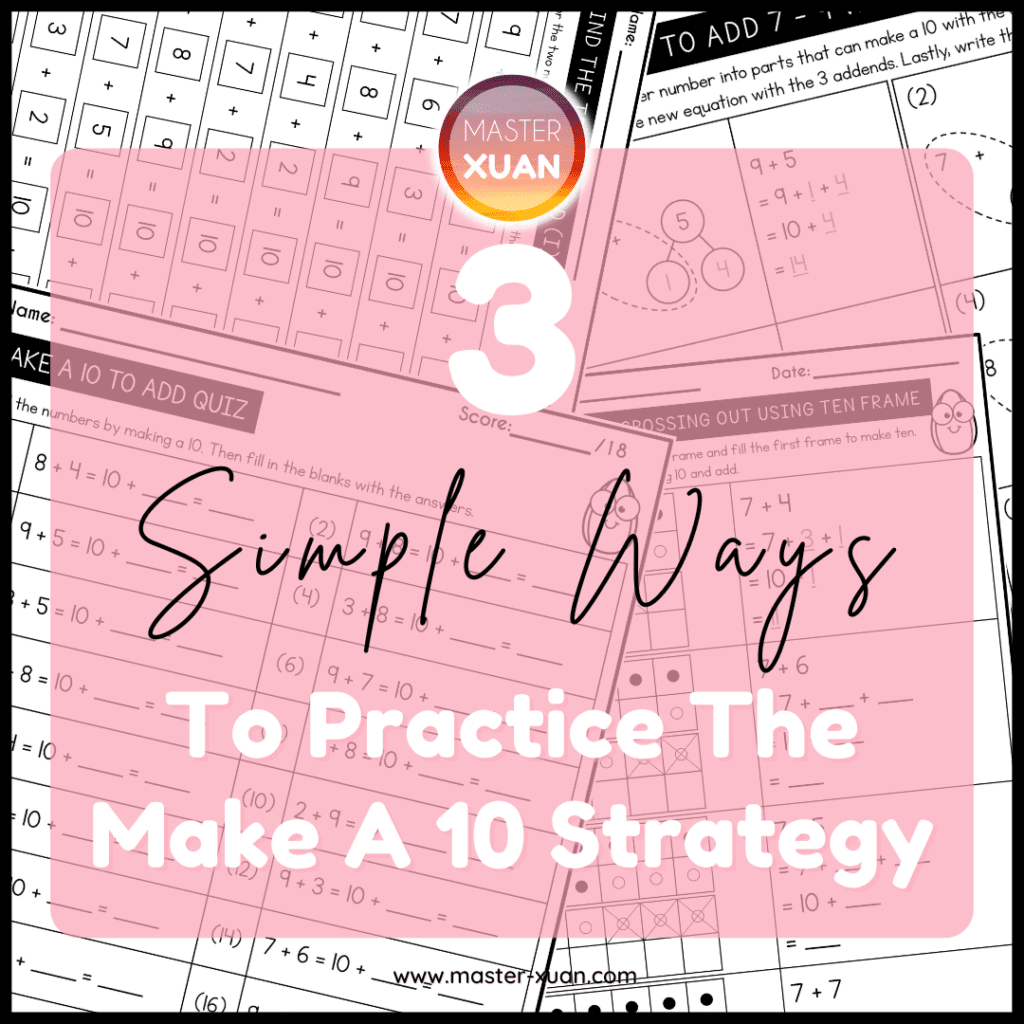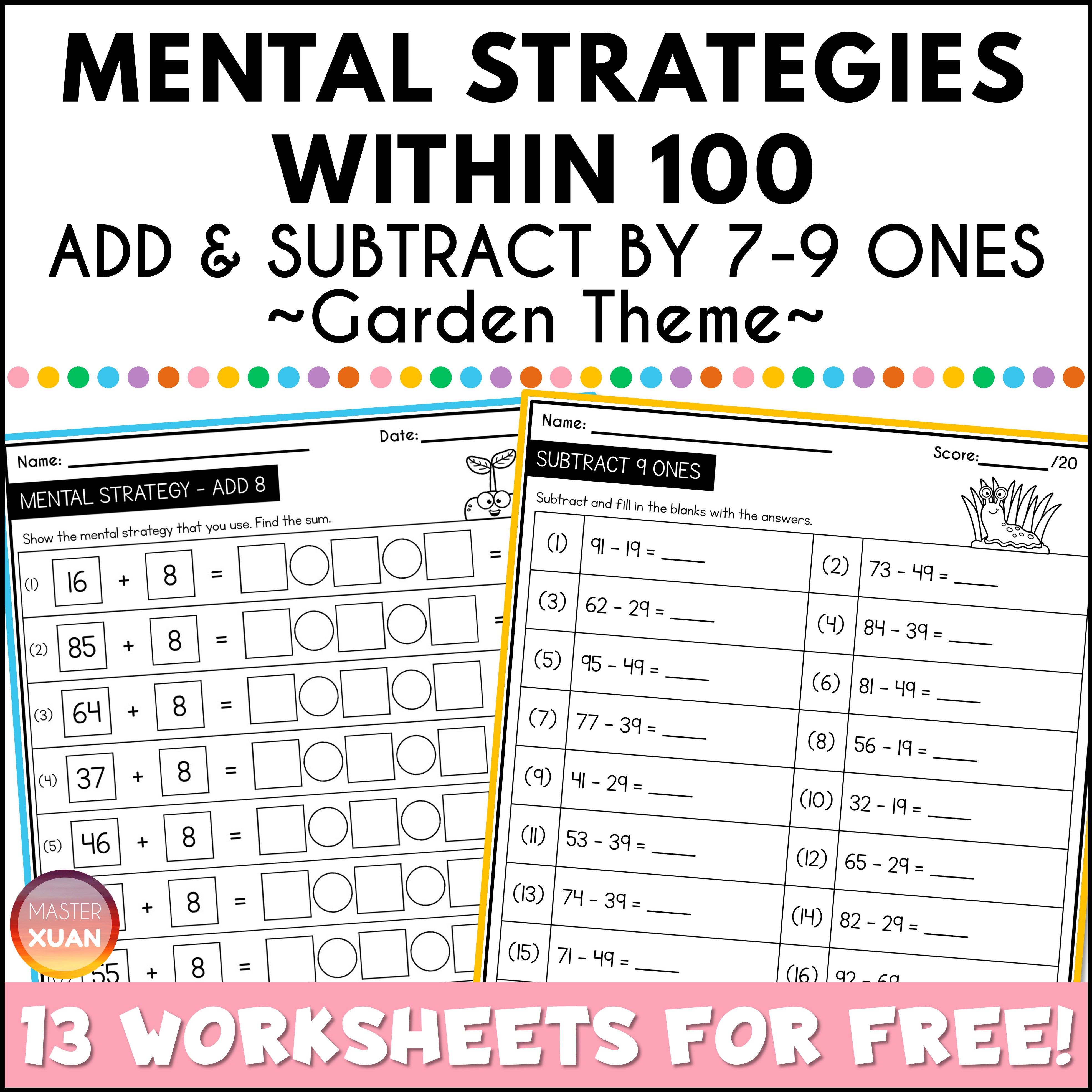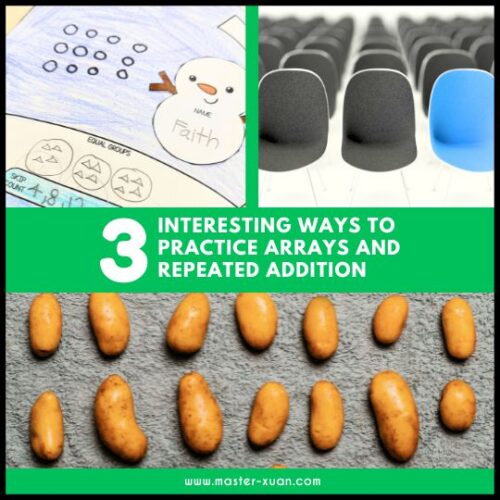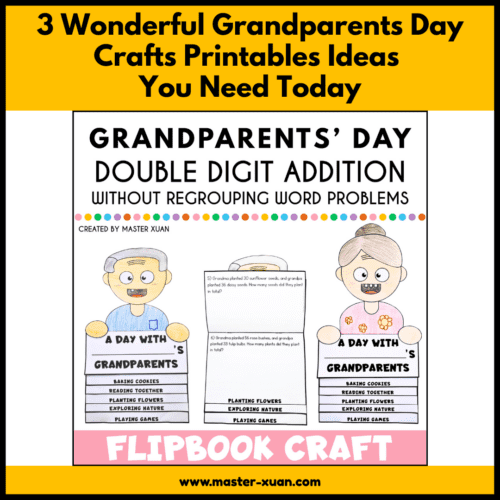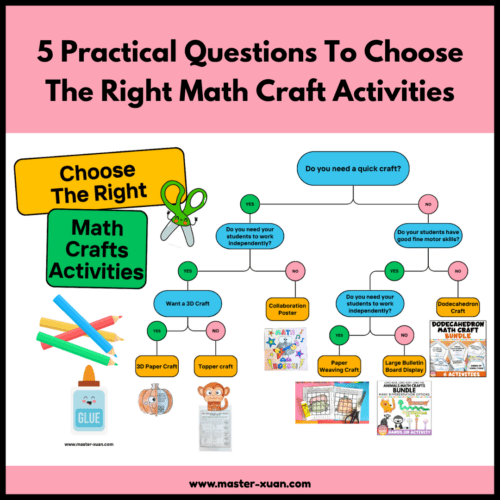What is a make a 10 strategy? Why is it useful? How to practice it? After reading this article, you will get all of these answers.
First, let’s take a look at what the make a 10 strategy is.
What Is The Making 10 Strategy In Math
The “Make a Ten to Add” strategy is a mental math approach where students use combinations of numbers that sum up to ten to efficiently reorganize numbers during addition problems.
Make 10 Strategy Examples
For example, if you have 7 + 6, you can think of it as 7 + 3 + 3, which equals 10 + 3, making it simpler to add.
3 Simple Ways To Practice The Make A 10 Strategy
In this article, I will just share with you 3 simple ways to practice the make a 10 strategy.
To master this strategy, students need to be familiar with the pairs that make 10 beforehand. So before practicing make a 10 strategy to add, ensure students are already fluent making 10.
Use Videos
Videos are inherently engaging, capturing the viewer’s attention through dynamic visuals, animations, and narration. This engagement can keep learners focused and motivated, leading to a more effective learning experience.
Math Notes with Rocko: Make a Ten to Add Song | Addition Facts with 9, 8, & 7
If needed, you can also show educational videos that explain the strategy.
- MATH-N-ROLL: Make a 10 to Add. Grade 1 – using ten frame.
- Math (and More) in Minutes – How to Use the Make a Ten Strategy – Grades 1 & 2 Mini Lesson – start from 0:17, shows the strategy using number bonds.
- Math Mammoth – “Make a ten” strategy for addition (1st grade math) – include sum more than 20.
Use making 10 strategy worksheet
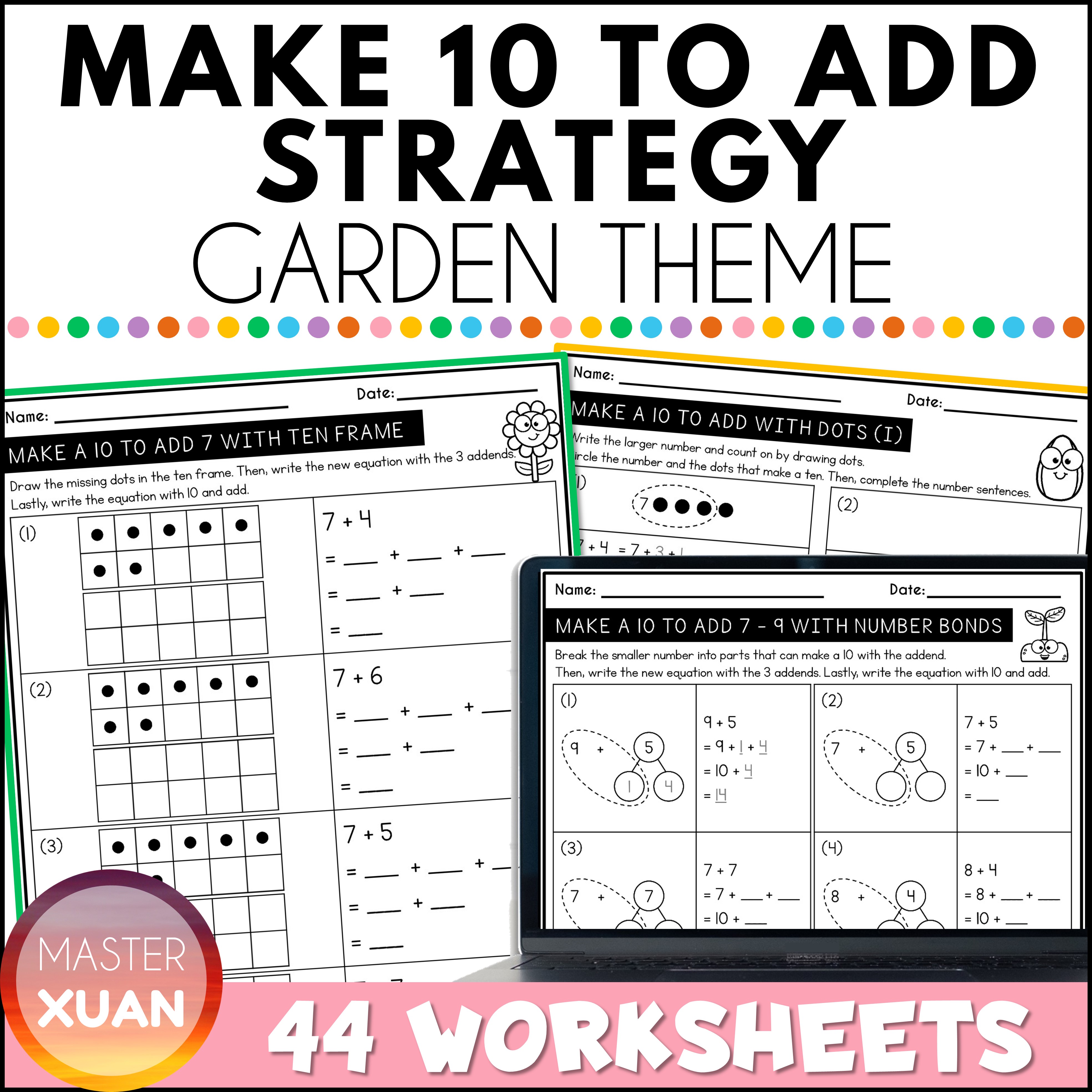
This NO PREP Making Ten To Add Worksheets let your students practice this strategy in a variety of ways.
- Make 10 Strategy With 3 Numbers
- Make Ten Using Ten Frame By Crossing Out
- Make Ten Using Ten Frame By Counting On
- Make A 10 To Add With Dots
- Make A 10 To Add With Number Bonds
- Make A 10 To Add By Matching Lines
- Make A 10 To Add Quiz
You can use these make-a-10 strategy printable in various stages of learning as there are many differentiated worksheets that can cater to various students’ needs.
Use the guided worksheet with an example when you first introduce this strategy. Then use a worksheet without a guide to practice. Then finally, use the quiz to assess them.
There are answer keys for easy checking, making it great as part of a substitute plan.
Use Manipulatives
For beginners, hands-on learning is key. Use physical objects like counting blocks, beads, or even fingers to represent numbers.
Encourage students to pair numbers to make a sum of 10, physically moving objects around to visualize different combinations.
In this Making Ten To Add Worksheets, there is a ten frame mat that students can use to solve the questions.
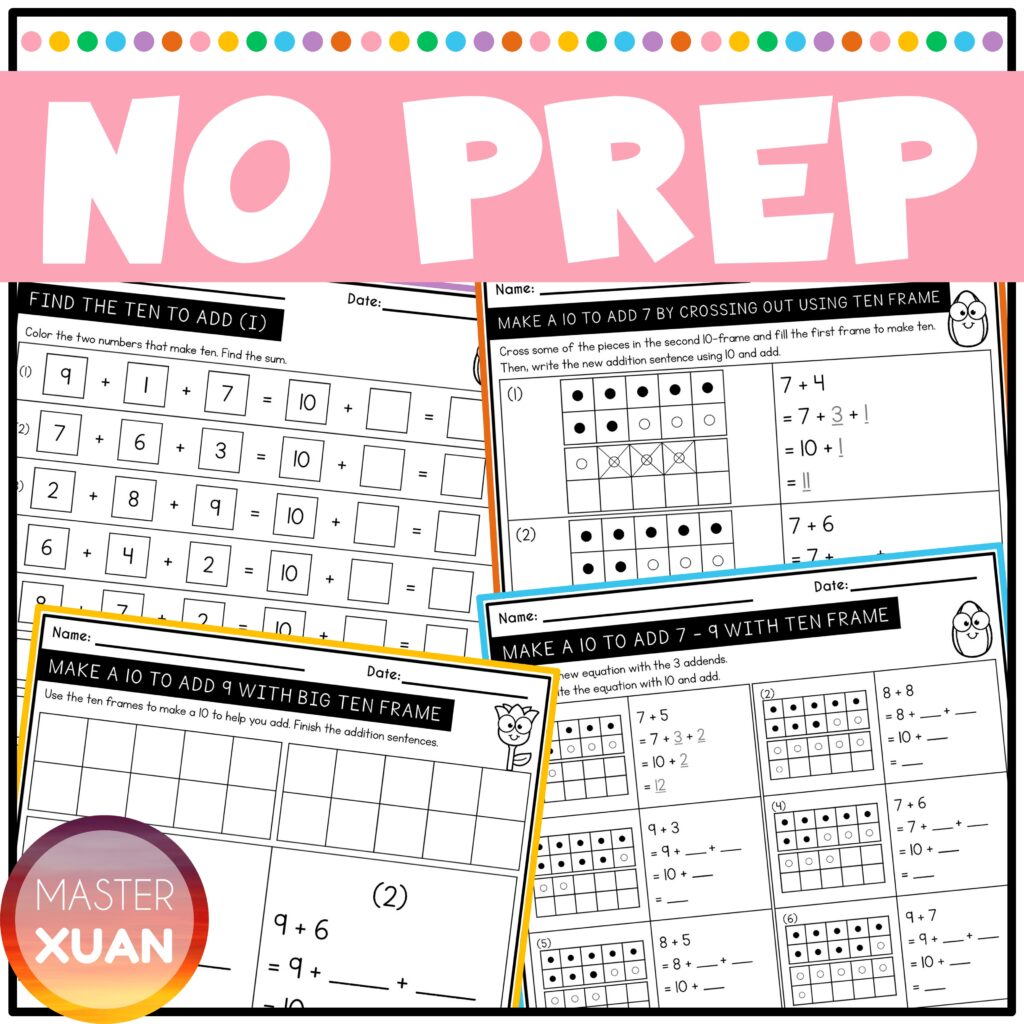
This tactile approach helps solidify the concept and build a strong conceptual understanding.
Final Thoughts
The “Make a Ten to Add” strategy simplifies addition problems by reorganizing numbers into combinations that sum up to ten, making calculations more manageable.
To enhance proficiency in this strategy, students can utilize three simple approaches: hands-on learning with manipulatives, engaging with educational videos, and practicing with tailored worksheets.
By familiarizing themselves with number pairs that make ten, students can develop a strong foundation for applying the strategy confidently.
Manipulatives offer a tactile experience that reinforces conceptual understanding, while videos provide dynamic visual demonstrations that keep learners engaged and motivated.
Additionally, worksheets offer opportunities for practice and reinforcement, catering to diverse learning needs through various activities and levels of difficulty.
If you need more practice for your students, buy the Making Ten To Add Worksheets today!
But before you go, enter your email below and receive this exclusive freebies!
Related Read: How To Teach Doubles Facts Addition Strategy In 3 Ways
Here are some pins that you can save to bookmark this post. Save them to your Pinterest Board now! ↓

